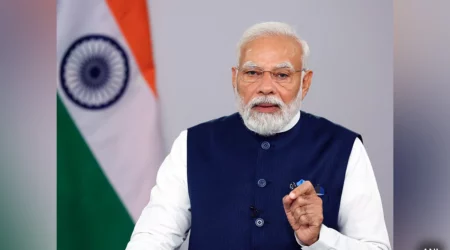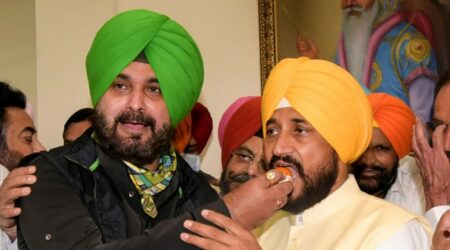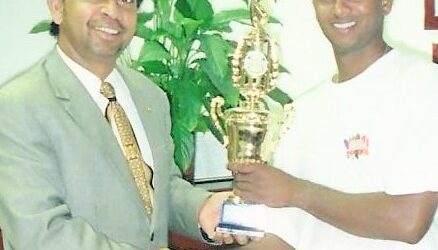By Bal Ram Singh
In the contemporary world, it has become a common place to criticize anyone, with whatever motives one may have. Social media provides an unrestricted avenue of expression. All sorts of people now criticize Ram, Krishna, Mother Teresa, Tulsidas, Dalai Lama, Gandhi, etc,. without even a shred of compunction! All these people for various reasons developed Agam gyan – Inductive knowledge – for the society.
Their work should be evaluated, but by whom?
From time immemorial it has been proactive to have peer review to make any judgments. One has to be at the same level as the one who is commenting, let alone criticizing.
As a professor of chemistry, I get invited to comment on others’ work very closely similar to mine, but also I get to review, comment, judge, others in academia and in the scholarly world in distant fields, sometimes not related to my areas of teaching or research at all. This is done many times to get a view of others working in unrelated fields to see the relevance of the work. But this is still done with peers, largely because such people have gone through a common process of training and practice.
Debates (shastrartha) and questioning have been integral methodologies for teaching, learning, and establishing consensus on varying perspectives of knowledge in the Vedic tradition.
Debate is a pedagogical tool used even in modern times to enhance student learning by collaborative efforts, critical thinking, and public speaking and defending debating positions (Brown, 2015). There are several forms of debate in classroom learning, such as four corner debate, fishbowl debate, role play debate, think pair share debate, meeting house debate, and problem solving debate (Vargo, 2012).
In Indian Vedic tradition, there is also a standard method of commenting, criticizing, and confronting people, including sages and gurus. Intellectuals would know it better than anyone else that many a time a person questioning someone of high place needed to become the disciple of the person he/she wanted to debate, and get the approval to have gained all the knowledge of the person he/she wanted to debate. Also, there has been a tradition of people becoming the disciple of the person they lose the debate with.
There are instances where the winner of the debate pronounced the death sentence on the loser, which was enforced by the kings of the stature of even Janaka. The epochal debate between Shankaracharya and Mundan Mishra invited intervention of the latter’s wife Ubhaya Bharati, who also happened to be a referee who declared Shankaracharya as the winner. But, then she herself challenged Shankaracharya with questions related to sex life, for which Shakaracharya had to take leave, and returned with experience to continue the debate.
In today’s world of justice, there is a jury system in the United States whereby it is assumed that people with similar experience (that peer again!) are expressed to pass on judgements. In the current political scenario, it has become a fashion to criticize Gandhi regarding his role in India’s partition, establishing Nehru as the first prime minister, or more derogatorily his experiments with celibacy. In that breadth, it is important to note that the information about Gandhi’s experiments with sex, truth, or non-violence is provided by Gandhi himself. Or, at least he responded honestly about the questions that were directly raised to him by fairly substantial people either directly working with him, those who closely worked with him, or even those who were his followers.

Intellectuals tend to take a position on behalf of several groups, Gandhi’s steno, his political associates, and women in general. It will be worthwhile for them to disclose their own truths (every experience, mental, physical, social, economic, or political), with no holds bar. That will be the first requirement to have added credibility intellectuals may have in collecting data, organizing them, and providing beautiful narratives. I hope the peer review system may be another feature that they can incorporate to create better narratives.
Based on her book, The Educational Heritage of Ancient India : How an Ecosystem of Learning Was Laid to Waste 1st Edition, Notion Press, 2017), Sahna Singh points out, “You also needed to be very familiar with the arguments of your… the person you want to challenge, you should be, you needed to know, how to argue in the place of that person as if you were him which is called purva paksha; arguing from the point of view of your opponent.”
Terms of references in such debates included, Sadhya – thesis which is to be developed and established; Siddhanta: proposition tenets or conclusion; Hetu, Udhaharana, pratyaksha, anumana, pramana.
The whole debating tradition was well established, and actually had criteria for giving points or taking points away. For taking points away, the terms of references included deducting points, hurting the proposition: Pratijna-hani – shifting the proposition, Pratijna-antara – opposing the proposition, Pratijna-virodha – renouncing the proposition, Pratijna-sannyasa – shifting the reason, Hetavantara (just look at all this) – resorting to the unintelligible, Avijnatartha – becoming incoherent, Aparthaka, etc.

Balram Singh is a Professor and the President of the Institute of Advanced Sciences, Dartmouth, Massachusetts, researching Ayurveda, Yoga, Vedic education, and Vedic social and political traditions. He is also an adjunct faculty at Jawaharlal Nehru University (JNU), New Delhi.












